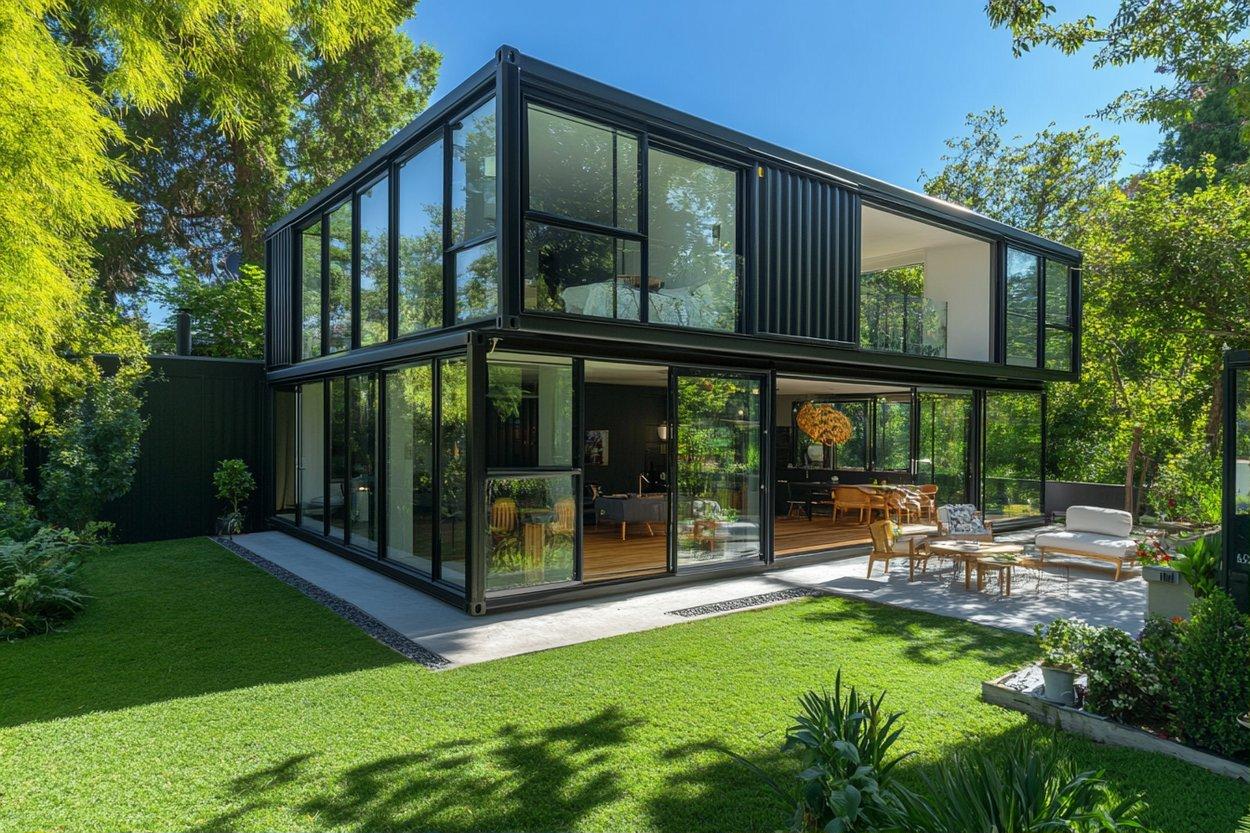Luxury Sustainable Prefab Homes for Canada
Discover modern prefab homes built for Canadian lifestyles that blend luxury finishes with rigorous sustainability. These homes pair high-performance envelope design with rooftop solar and battery storage to cut bills and emissions. Energy-efficient smart systems optimize comfort and demand while resilient materials and modular construction speed delivery and simplify permits across Canada.

The Canadian housing landscape is embracing a new era of sustainable luxury through innovative prefabricated construction methods. These homes represent a significant departure from traditional building approaches, offering sophisticated design elements while maintaining strict environmental standards. Modern prefab construction integrates advanced materials, energy-efficient systems, and customizable modular designs specifically engineered for Canada’s diverse climate conditions.
Luxury prefab homes in Canada are redefining residential construction standards through their combination of premium aesthetics and environmental responsibility. These structures utilize sustainable materials sourced through responsible supply chains, reducing the overall carbon footprint without compromising on quality or visual appeal. The manufacturing process allows for precise quality control and waste reduction, making these homes an attractive option for environmentally conscious buyers seeking upscale living solutions.
What Makes a Passive First Energy Envelope Essential?
A passive first energy envelope forms the foundation of sustainable prefab construction, creating an ultra-efficient thermal barrier that dramatically reduces energy consumption. This approach prioritizes superior insulation, advanced air sealing, and strategic window placement to minimize heating and cooling requirements. Canadian prefab manufacturers are incorporating triple-pane windows, continuous insulation systems, and thermal bridge-free construction to achieve exceptional energy performance ratings.
The envelope design considers Canada’s extreme temperature variations, from harsh prairie winters to humid coastal summers. High-performance materials like structural insulated panels and advanced membrane systems create airtight barriers that maintain consistent interior temperatures year-round. This passive approach reduces mechanical system dependencies while ensuring optimal comfort levels regardless of external weather conditions.
How Do Integrated Solar and Battery Systems Work?
Integrated solar and battery systems represent the next evolution in residential energy independence, particularly suited for Canada’s abundant solar resources. These systems combine photovoltaic panels with advanced battery storage technology, allowing homes to generate, store, and manage their own electricity supply. Modern prefab homes incorporate these systems during the manufacturing process, ensuring seamless integration and optimal performance.
Battery storage technology has advanced significantly, with lithium-ion systems now capable of powering entire homes for extended periods during grid outages. Canadian installations benefit from net metering programs that allow excess solar production to be fed back into the grid, creating potential revenue streams for homeowners. The integration process includes sophisticated monitoring systems that optimize energy usage patterns based on household consumption and weather forecasting.
Which Luxury Materials Have Low Carbon Footprints?
Luxury materials with low carbon footprints are revolutionizing high-end prefab construction through innovative sourcing and manufacturing processes. Reclaimed hardwoods, bamboo flooring, and recycled steel frameworks provide premium aesthetics while maintaining environmental credentials. Canadian manufacturers are increasingly utilizing locally sourced materials to reduce transportation emissions and support regional economies.
Natural stone alternatives made from recycled content, low-VOC finishes, and sustainably harvested timber create luxurious interiors without environmental compromise. Advanced composite materials offer the appearance of premium surfaces while incorporating recycled content and requiring minimal maintenance. These materials undergo rigorous testing to ensure they meet both luxury standards and environmental certifications required for sustainable construction projects.
Why Is Smart Home Energy Management Crucial?
Smart home energy management systems optimize residential energy consumption through automated controls and real-time monitoring capabilities. These systems integrate with heating, cooling, lighting, and appliance networks to create comprehensive energy efficiency programs tailored to individual household patterns. Canadian prefab homes benefit from these technologies through reduced utility costs and enhanced comfort control.
Advanced algorithms learn from occupancy patterns and weather forecasts to pre-condition homes for optimal comfort while minimizing energy waste. Integration with renewable energy systems allows for sophisticated load balancing that maximizes solar production utilization and battery storage efficiency. Remote monitoring capabilities enable homeowners to track energy performance and make informed decisions about consumption patterns.
How Are Modular Builds Adapted for Canadian Climates?
Modular builds for Canadian climates incorporate specialized design elements that address the country’s diverse weather patterns and seasonal extremes. Northern regions require enhanced insulation and vapor barrier systems, while coastal areas need moisture management and corrosion-resistant materials. Manufacturers design modular components with regional climate data to ensure optimal performance across different Canadian zones.
Foundation systems are engineered for frost protection and soil conditions specific to each region, while roof designs accommodate snow loads and ice dam prevention. Modular construction allows for factory-controlled assembly in climate-controlled environments, ensuring consistent quality regardless of on-site weather conditions during installation. This approach reduces construction delays and maintains building envelope integrity throughout the assembly process.
| Provider | Home Type | Size Range | Cost Estimation |
|---|---|---|---|
| Karoleena Homes | Luxury Prefab | 1,200-4,000 sq ft | $350,000-$800,000 |
| Bonneville Homes | Modular Luxury | 1,500-3,500 sq ft | $280,000-$650,000 |
| SIP Building Systems | Passive House | 1,000-2,800 sq ft | $320,000-$720,000 |
| Method Homes | Modern Prefab | 1,400-4,200 sq ft | $400,000-$900,000 |
| Westeck Windows | Custom Modular | 1,800-5,000 sq ft | $450,000-$1,200,000 |
Prices, rates, or cost estimates mentioned in this article are based on the latest available information but may change over time. Independent research is advised before making financial decisions.
The luxury sustainable prefab home market in Canada continues expanding as technology advances and environmental awareness increases. These homes represent a practical solution for buyers seeking premium living spaces while maintaining environmental responsibility. The combination of advanced construction techniques, sustainable materials, and integrated technology systems creates residential options that exceed traditional construction quality while reducing environmental impact. As manufacturing processes improve and costs decrease, luxury sustainable prefab homes are positioned to become increasingly accessible to Canadian homeowners seeking innovative housing solutions.




